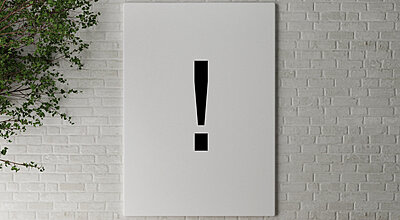Two things to remember when using physical reminders
Datum: 2017-06-20 17:57

A message both I myself and others working with personal efficiency keep coming back to is that we are wise to keep notes regarding what we have to do in as few places as possible — preferably in one single to-do-list.
But, as is often the case, things are sometimes a bit more complicated than we would like them to be, and there are exceptions to every rule. The important part of this recommendation is not that we strictly adhere to the rule, but that we are able to do the right thing at the right time.
If there is something we can only do in a particular location and nowhere else, and we are in this location often enough for the task to get done sometime in the near future, we might be better off just creating a reminder for doing the task when we are in proximity of this location and not bother putting the task on the to-do-list. Having the task on our to-do-list is of no use to us when we are anywhere else than in that particular location, and if we create a notification that reminds us when we are in said place, we will be notified of the task at the right moment.
Doing something different
In a recent study, the behavioral scientists Todd Rogers (Harvard University) and Katherine Milkman (University of Pennsylvania) explore how we can optimize physical reminders regarding to-do-tasks. Physical reminders can for instance be deliberately placing a stuffed animal (like in the study) somewhere, sticking a label with a certain symbol on some surface, putting up a sign with a certain word, or just hanging a regular note somewhere (”Turn off the lights when you leave.”)
Rogers and Milkman found a couple of crucial qualities all the reminders had in common that we can use in our own work:
- Reminders are more effective if they stand out from the environment we choose to use them in. If for instance the space we want to place the reminder in is usually empty, we will react when there is suddenly a large note there instead.
- They are also more effective if they differ somehow from all the other items around them. If there is a lot of text on the wall, an image will catch your attention. If there are a lot of pictures, you will pay more attention to a text.
Tripping on purpose
If we design or choose our physical reminders with care they will serve us much better in reminding us to do something at the right time and place. It is almost like you are placing items you will figuratively tripp over throughout your workday, that will catch your attention and remind you. If we already know when we will need to do something in a certain location, we place a friendly reminder right there now, so that we will stumble upon it later in the day — just at the right time.
But, the reminder has to be valid every time you see it. If it is placed in a location where it sometimes reminds you of the task needing to get done but other times just sits there (since you do not have to do the task right then), you will still need to remember when to do what by yourself, which undermines the method.
Do this
- Take a few moments to think about if you have a location and situation where you need to remember doing something special, and can use Rogers’ and Milkman’s conclusions:
- Is there something you must always remember to bring when you leave?
- Is there a step you always forget to do when working with a particular machine?
- Is there something you have decided to do from now on whenever you arrive to a certain place, but have a tendency to skip since it is boring (but you still have the ambition to ”do better”)?
- What would be the best possible way to remind yourself?
- A written note?
- An item conveying a subtle message only you are aware of?
- A sign with an unmistakable symbol?
- Some other visual signal that will help you do what you must get done?
- Do whatever you need to do to create the reminder (or put doing so on your to-do-list if you prefer taking care of it later).
You will see it when you need it
If you arrange physical reminders that stick out from their surroundings at your office, you will get the right thing done at the right time much easier — even if the task is not on your otherwise comprehensive to-do-list. You will need to keep fewer things in your head, and can rest assured that you will be reminded at the right time to do what you want to get done.
What’s your way?
What physical reminders do you use to make your life easier? Any good ideas are welcome, so write your in a comment.




